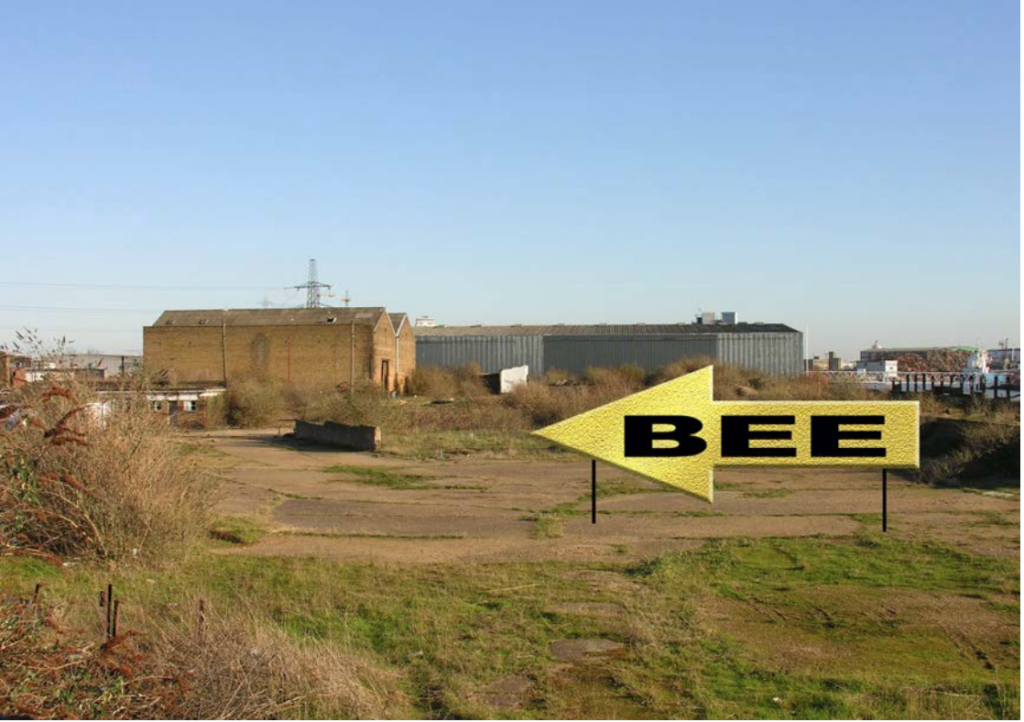This project brought together two artists, Mooch and Peter Dunn, to develop their research through around themes of Biodiversity and Technology, Mooch Design (also known as Mooch) primarily focussed on biodiversity and Peter Dunn on technology with a project entitled FFAST Track. The research and development was kindly funded by The Arts Council.
Mooch Design is the studio run by artist and designer Theresa Smith, she has an award winning creative practice specialising in public realm art and design. Peter Dunn is an artist with a long standing interest in creating projects that work at the intersections and art, regeneration, technologies and the environment.
Both artists worked closely with the DLR – Docklands Light Railway in east London – as well as being linked thematically through a third artistic piece of work – The Mosaic Project – which combined themes around biodiversity and technology – producing a mosaic mural exploring themes around technology within a memorial community garden designed to nurture local biodiversity.
R+D Activities
The Biodiversity of Habitats
To understand working within the highly regulated public realm environment of rail networks and to comply with DLR’s health and safety guidelines, Mooch Design therefore developed key contacts within the DLR, specifically within their Safety and Marketing departments.
Mooch Design also developed existing contacts at Greenspace Information for Greater London (GiGL) for access to audiences interested in the reporting of species and had extensive meetings with The Bee Collective, experts in the field of local bee species supporting London beekeepers. Mooch proposed artworks to support the London bee populations which are critical elements of local biodiversity.
After numerous meetings and connections, concept artworks were developed; a series of public sculptures proposed along the DLR route, utilising Mooch’s research into the aesthetic visual language of aviation, to specifically link to highlight the importance of supporting bee species.
Mooch’s project proposal:
The artwork uses iconic design language to focus on the plight of bees, currently under threat globally but also locally in east London’s diminishing brownfield sites, home to some rare species. The visual language plays with preconceptions as familiar graphic imagery is translated into wildlife habitats.
These will be at once symbolic and practical habitats. They will offer at times temporary, seasonal sanctuary for the bees and their wildlife neighbours, but some artworks will aim to provide permanent, evolving habitats that over time could exist nowhere else. The specific focus on bees would point to an understanding of the global issues in an area connected to the outside world via aviation.
Royal Docks Habitats uses an ironic play on juxtapositions of scale, perceptions of traditional users and their place in the hierarchy of the skies. There is a strong application of the design language of international travel in many of the ideas, referencing the nearby London City Airport. Crucially, in recognition that our cities are increasingly being explored from the air, via the internet and not just your plane seat, these iconic art installations will quickly become part of the identity of the area.

FFAST TRACK
Peter Dunn’s project involved integrating closely with the DLR system, and throughout his research and development phase developed contacts with DLR staff including Karen Bain, Development & Planning Manager.
Peter also implemented initial phases of the initial artistic content via a series of interviews with nine local artists at their studios to discuss their works of art that are located close to key DLR stations and routes. A selection of these interviews have been edited into a short video piece about the proposed work and can be seen here.
The proposal that emerged from the FFAST-Track research phase was a GPS enabled app that triggers audio visual expressions of the cultures and identities folded into the places passed along the route of the DLR. The smartphone or device enabled app encourages people travelling through East London to access the history, culture and identity of the area they are travelling through by way of images, texts and sounds to experience a new and exciting sense of their journey.
FFAST IS a framework for a living; a growing, interactive social sculpture, and an opportunity for participants to flaneur, engaging creatively with psycho-geography and experiencing the diverse realities layered into a place.

